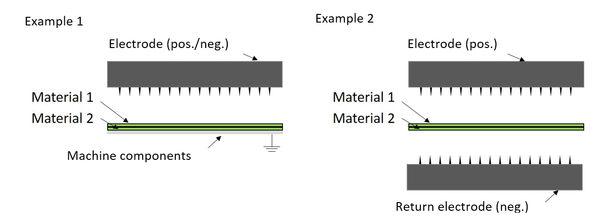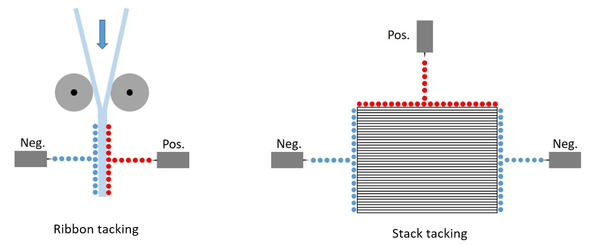Charging can be an advantage
The unwanted effects of static charge can also be utilized in many ways to benefit processes. This is especially true when non-conductive materials are to be fixed together without contact, through targeted charge. In order to achieve an optimal electrostatic fixation, a return electrode must be positioned opposite the material which is to be charged. This may simply be a grounded metal surface or even an additionally arranged charging electrode with opposite potential. In order to avoid undefined states, it is very important to neutralize the charged materials beforehand. Thereby, in order to avoid negative effects, the preceding discharge should not be installed in the immediate vicinity of the active charge.
Through subsequent targeted charge, the two materials can be separated from each other again. The areas of application for active charging are: the fixation of non-conductive materials (for example, chill roll tacking, ribbon tacking, etc.) as well as, the stack tacking of foil and paper, the detection of micro-cracks and electrostatic remoistening.
The KERSTEN charging systems, similar to the discharging systems, are a Plug-in System, in which all the charging components can be connected to the intended high-voltage power supplies. The power supply is generated via 24V DC and is, thus, independent of the global standards. The operation of the high voltage power supplies is via a clearly arranged control panel as well as industry-standard interfaces. A feedback on the working parameters and arising system errors also exists.


